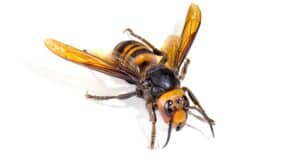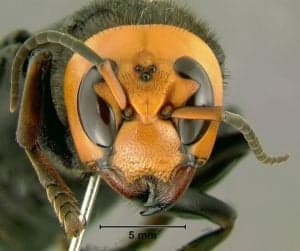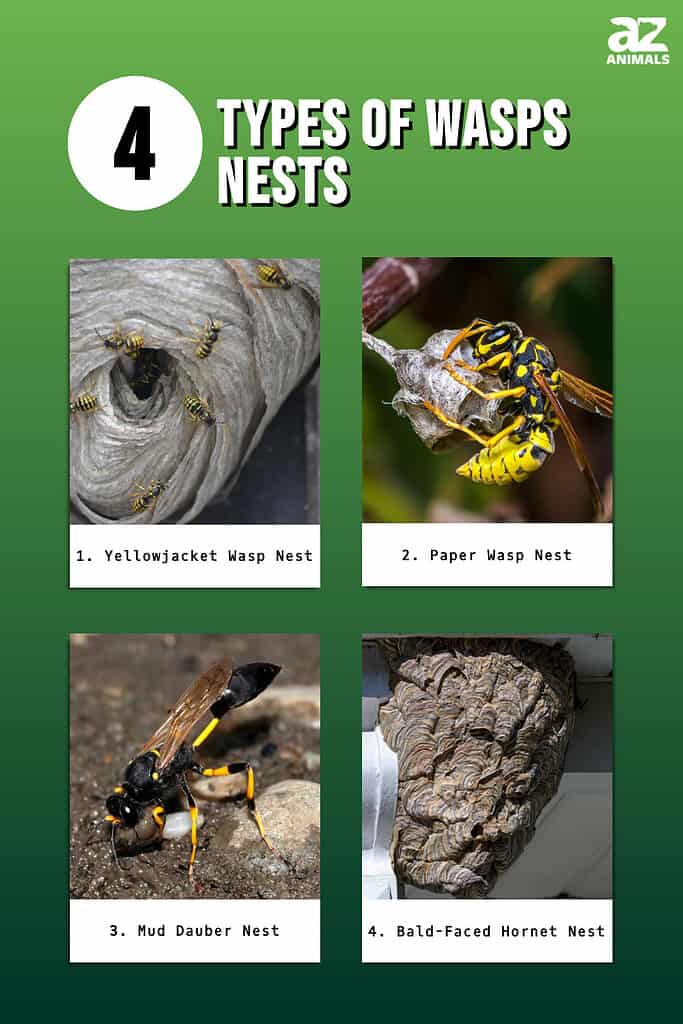
You may have spotted a papery-looking nest around your home and are wondering exactly what type of flying insect has cozied up next to you. While wasps offer beneficial pest control, it’s good to know what you’re working with so you can take action as needed. Learn about the four types of wasp nests and their unique features!
4 Types Of Wasp Nests And Their Unique Features
1. Yellowjacket Wasp Nest
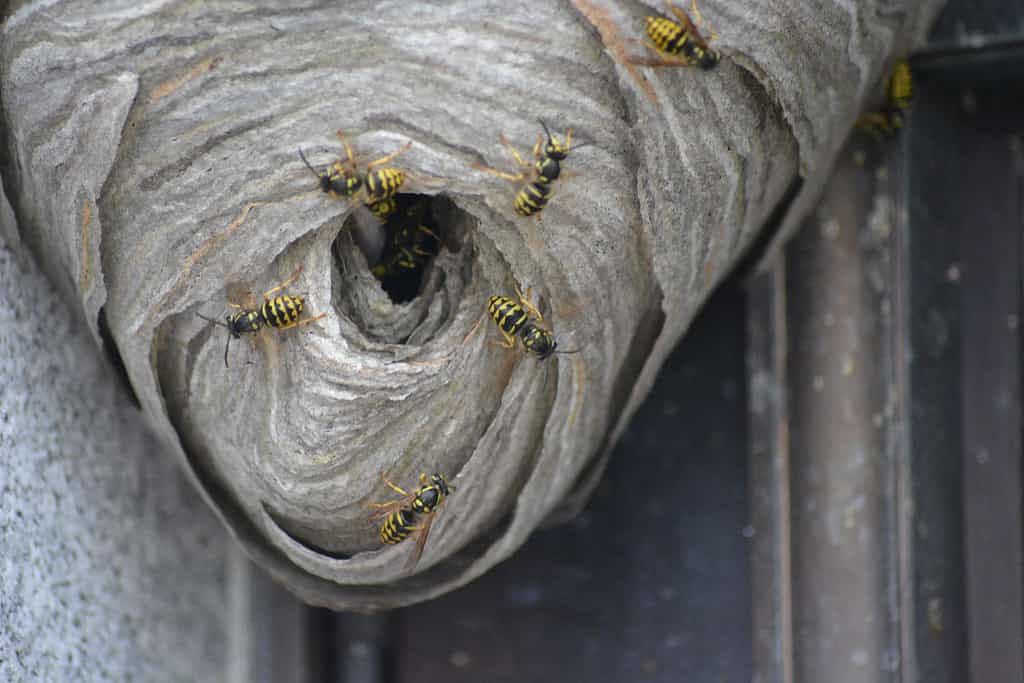
Yellowjackets will aggressively defend their nest.
©Daniel Loya/Shutterstock.com
The wasp nest of yellow jackets is distinguished by its papery material. Whereas some wasps build nests with multiple openings, yellowjackets keep their nests neat with only one opening. These wasps typically nest in the ground, but they may also head over to wood piles. Ultimately, they need cover in an enclosed space. Although you may only spot the entrance, yellowjackets can build massive nests with tons of different tiers for their cells.
2. Paper Wasp Nest

Unlike yellowjackets, paper wasps look to the eaves of houses and other buildings to set up shop out in the open.
©JorgeOrtiz_1976/Shutterstock.com
The shape of a paper wasp nest is pretty easy to spot, especially because they look very much like inverted umbrellas. Unlike yellowjackets, paper wasps look to the eaves of houses and other buildings to set up shop out in the open. The material is also papery, but the design is more of an open plan with multiple entry points. Usually, a single stalk supports the whole nest.
3. Mud Dauber Nest
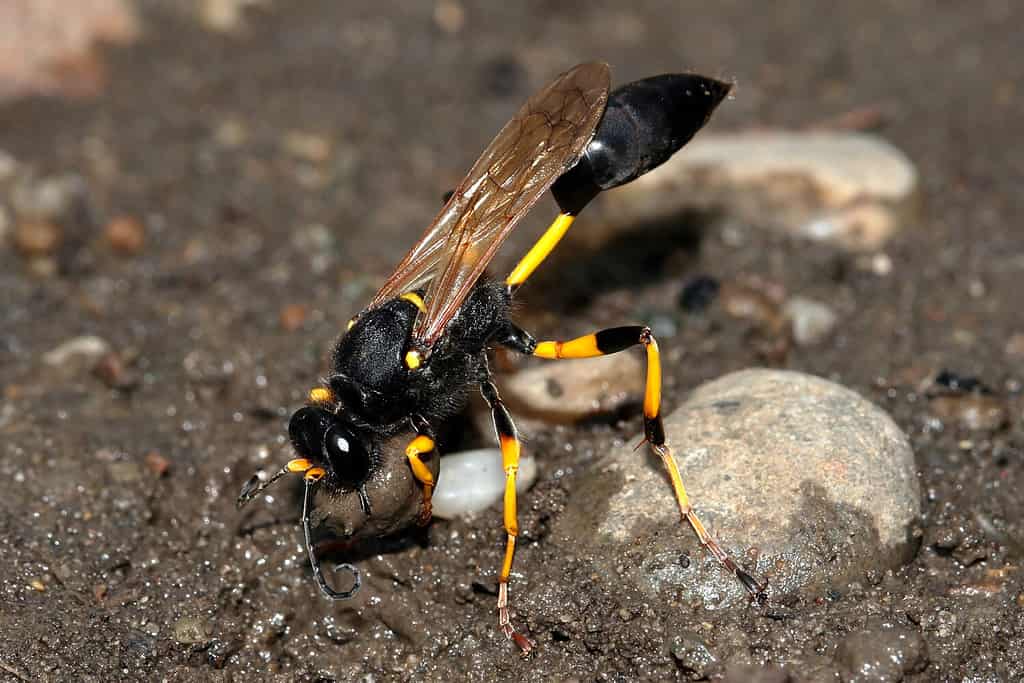
They build their nests out of mud in crevices.
©Geza Farkas/Shutterstock.com
You might be able to guess what kind of material mud daubers use to create their nests. Unlike yellowjackets and paper wasps, mud daubers go for a sturdier environment. They build their nests out of mud in crevices. The shape is tubular and they’re rather small with multiple openings. They kind of look like multi-tube whistles.
4. Bald-Faced Hornet Nest

The nests can be as large as a basketball but are shaped more like a football.
©Michael G McKinne/Shutterstock.com
But wait, isn’t this article about wasp nests? Well, bald-faced hornets are not true hornets. They’re wasps! They typically nest about three feet from the ground. They get creative, using a variety of wood fibers, mixing them with saliva, and constructing their nests that way. The nests can be as large as a basketball but are shaped more like a football. They appear papery and have a single opening toward the bottom.
How To Differentiate Bee And Wasp Nests
The primary method to distinguish between bee and wasp nests is to look at their size and shape. Whereas wasps tend to construct more contained nests, bees tend to sprawl. A beehive is significantly larger than a wasp’s nest. Wasps can’t produce wax, which means they can’t create the honeycomb structure of bees. If you’re curious and want to identify a nest, don’t get too close. These are their homes, and they get protective!
What is the Difference Between Wasps and Hornets?

European hornets and wasps are very similar insects. Hornets are larger and thicker than wasps.
©TTstudio/Shutterstock.com
Wasps and hornets are similar insects, both belonging to the same insect family Vespidae. However, there are some key differences between wasps and hornets. Wasps have slender, smooth bodies with narrow waists. They typically measure between 13-25mm in length and can be black or yellow with stripes on their abdomens.
Hornets tend to be larger than wasps, measuring up to 35mm long. They also have a thicker body with a wider waist than wasps and usually have bright yellow, orange, or brown stripes on their bodies. Wasps generally live in colonies and build paper-like nests out of wood fibers which can be found attached to walls, trees, or eaves of houses. Hornets usually construct their nests underground or in hollow trees. Wasps are also more active during the day whereas hornets tend to be active at night.
What is the Difference Between Wasps and Yellow Jackets?
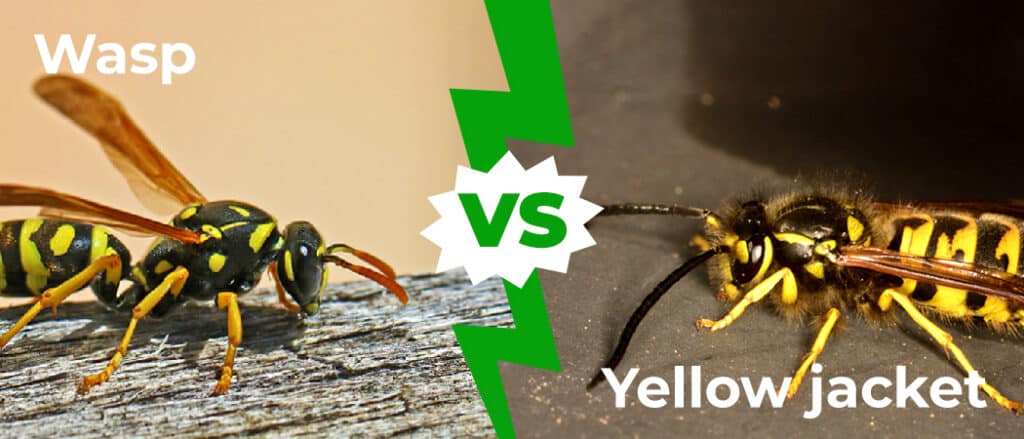
Yellow jackets are a type of wasp that belongs to the genus Vespula. Yellow jackets are usually yellow and black striped with smooth, shiny bodies. They often live in large colonies and build nests out of paper-like material which can be found attached to walls or underground. Yellow jackets are generally more aggressive than other types of wasps and will defend their nest if disturbed. In comparison to other types of wasps, yellow jackets tend to have a larger presence during the summer months when they are most active. They also tend to travel in larger numbers than other types of wasps and can be seen hovering around food or sweet beverages at outdoor events.
You can also differentiate between yellow jackets and wasps by how they look when they are flying. Yellow jackets have thick, short bodies and black antennae. They tuck their legs up under their bellies while flying. European paper wasps have a very skinny waist and long bodies with orange antennae. They let their legs dangle freely in the wind while they fly.
Summary Of 4 Types Of Wasps Nests
| Rank | Wasp | Nest Type |
|---|---|---|
| 1 | Yellowjacket | papery material with one opening |
| 2 | Paper Wasp | material is also papery, but the design is more of an open plan with multiple entry points |
| 3 | Mud Wasp | nests build from mud; rather small with multiple openings |
| 4 | Bald-Faced Hornet | a variety of wood fibers, mixing them with saliva; appear papery and have a single opening toward the bottom |
The photo featured at the top of this post is © iStock.com/SKatzenberger
Thank you for reading! Have some feedback for us? Contact the AZ Animals editorial team.





